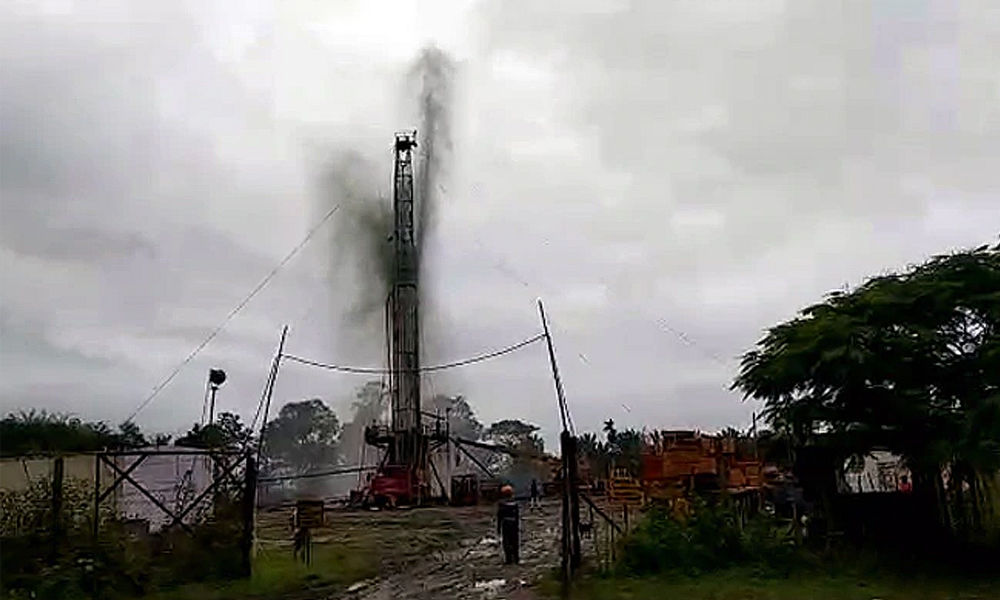A week since the blowout of a natural-gas producing well of the Oil India Limited (OIL) in upper Assam’s Tinsukia district, natural gas continues to leak.
A team of experts from Singapore is scheduled to reach the state on Wednesday, June 3 to plug the leak.
The blowout, or an uncontrolled release of natural gas, was reported on the morning of May 27, after a producing well under Baghjan Oilfield in the district unexpectedly became ‘active’ during operations. A blowout occurs when pressure control systems fail in an oil well or gas well.
‘All work is progressing but not as per our calculation because of the challenges we are facing. This is a huge exercise, which requires a lot of preparation and we are doing what we can. There are 30-40 people on site at any given point. This is not like a house catches fire which we can easily douse. It is more complicated than that,’ Tridiv Hazarika, OIL, was quoted by The Indian Express.
As many as 2,500 people have been evacuated and shifted to relief camps. The delay in controlling the leak has also affected the biodiversity in the area.
Baghjan is close to the Dibru Saikhowa National Park, the Maguri-Motapung wetlands, and the forest villages of Barekuri. While Dibru Saikhowa National Park is a biodiverse area renowned for migratory birds, Maguri-Motapung wetlands is an ecotourism site.
According to several residents, activists and experts, the blowout is causing extensive damage to the diversity and wildlife in the region, including Hoolock Gibbons and Gangetic River Dolphins, both endangered as per IUCN red list.
On Friday, a carcass of a Gangetic Dolphin was found at Maguri Beel wetlands, part of the national park, and has been sent for forensic examination. According to locals, a dead snake, a variety of fish and birds have also been reported from the region.
According to a Hindustan Times report, the national park has recorded over 40 mammals, 500 species of birds, 104 fish species, 105 butterfly species and 680 types of plants. It is home to tigers, elephants, wild buffalos, leopards, hoolock gibbons, capped langurs, slow lorises, Gangetic dolphins, and critically endangered bird species such as the Bengal florican, white-winged duck, greater adjutant stork, white-rumped vulture, among others.
Last month, the Ministry of Environment, Forests and Climate Change gave environmental clearance for drilling at seven locations under the Dibru-Saikhowa National Park. OIL said that they are drilling with requisite permissions from the government and that the areas do not fall under the Eco-Sensitive Zone.
‘The continued oil leakage from the blow it is a horrific environmental crime. It has caused the death of the endangered Gangetic dolphin and thousands of fish, laying wetlands and fields waste, it is endangering the rare hoolock gibbons,’ Prerna Singh Bindra, a former member of National Board for Wildlife, told Hindustan Times.
‘Unfortunately, this is not the first time there has been such a leakage or environmental norms have been flouted –indeed part of the pipeline in the eco-sensitive zone of the Dibru-Saikhowa National park had been laid before mandatory environment approvals were given. Dibru-Saikhowa and its surrounding landscape has immense ecological values, and allowing drilling inside a national park is against the spirit and letter of the law, besides violating our basic constitutional principles of protecting environment,’ Bindra added.
Also Read: Trees Cut In 16 Hectare Untouched Land In Elephant Reserve To Make Way For Coal Mining: RTI











